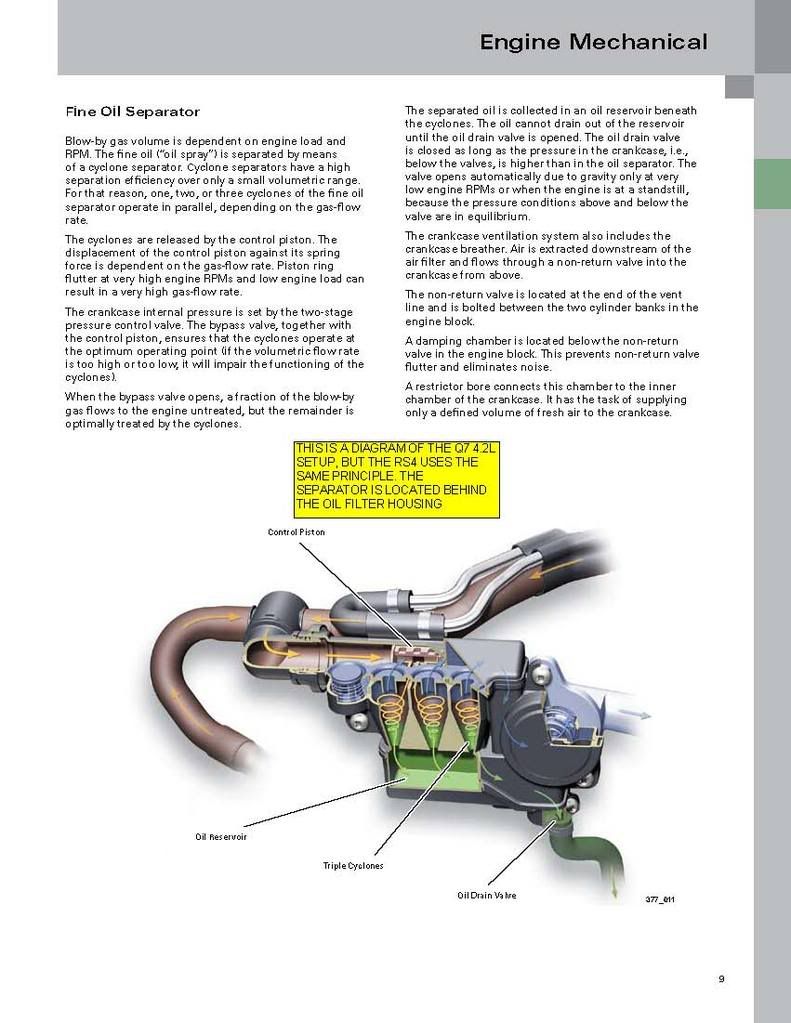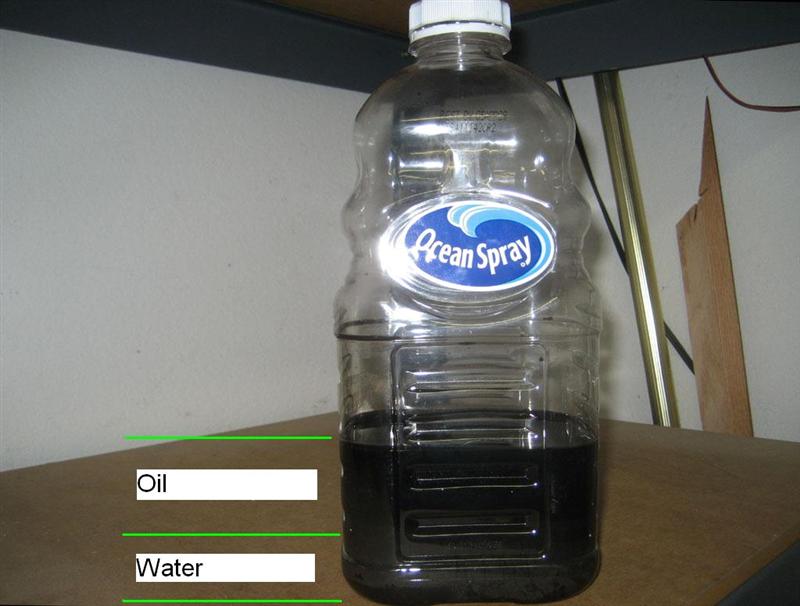(All of the following information is theoretical as far as I'm concerned)
The B6 3.0L has a PCV system which has at least 2 functions:
-When the engine is up to temperature, the oil stays liquid while the water vaporizes. In order for the water to escape, there must be a PCV system in place. If the water can't escape, it will make the oil acidic. I don't know where this water comes from but I have read that it is from blow-by (gasoline has water in it) and condensation.
-Prevent excess crankcase pressure, which can blow seals and what not
Oils don't all have the same vaporization point. A cheap, low-quality dino oil that hasn't been changed in 15k miles will vaporize easier than a high quality oil with 5k miles, let's say Shell Rotella T6 or Motul 8100 X-Cess 5w40. For this reason, you don't just get water vapor escaping through the stock PCV system, into the intake, to be re-burned. You also get "oily aerosols" as Diagnosticator put it. I am guessing that with a high quality oil you will get less of these aerosols. My 3.0 intake tract, at 100k mi, is completely covered in what appears to be "oily aerosols". Maybe this is because the previous owner infrequently changed the oil with cheap dino oil. But then again, intake tract/carbon build-up is a hugely prevalent issue amongst VAG cars, namely the B7 chassis. Sure, we don't have the intake valve carbon build-up of a B7 RS4 but that is because they have direct injection, whereas we have port-injection (gas constantly sprays and cleans the intake valves). But the build-up still remains on other surfaces that don't get cleaned. Such as the intake manifold (in my 3.0).
What I am trying to do is clean my intake manifold, and keep it clean. The general consensus is that the Mann ProVent 200 is the best thing since sliced bread, so I'm inclined to go with this for a catch can set-up.

My questions are:
-Am I going about this the right way? Maybe cleaning my intake manifold once, and using good oil from here on out is the solution?
-If I should go with the Mann ProVent 200, how should I route it? Some suggest routing the drain to the crank-case/sump. Others suggest putting a filter on it and letting it go to atmosphere (doesn't make sense because there's liquid). Others suggest capping off the drain, then manually draining it every once in a while.
The less I have to touch the car, the better. I have a cheap eBay catch can. I'm thinking, maybe I can route the Mann ProVent drain to a "secondary catch can", so that I don't have to empty out all of the "crap" so often? ("crap" meaning oil/water, etc. that is collected by the catch can/caught by the filter).
Anybody running a similar set-up?
MK4 TDI installation write-up: http://forums.tdiclub.com/showthread.php?p=846480
Differences between real and fake China "Mann ProVent 200": www.carformance.com.au/hp200
Mann ProVent brochure: https://www.google.com/search?q=Mann...x-a&channel=sb
Mann ProVent 200:

eBay secondary catch can, to which the ProVent would drain to:
Although Mann says it is possible (and seems to recommend) routing the ProVent drain back to the sump/crank, I am not sure if this is healthy for the motor. I say this because those who use the ProVent report that it collects water. If this is the case, then why drain water back into the oil, which contaminates it and makes it acidic? Isn't that one of the main reasons for the stock PCV system in the first place - to get rid of water?
IF manually draining the ProVent (or a catch can that the ProVent drains TO) is the solution, might there be any issues in climates where water freezes? The ProVent has a sort-of emergency pressure relief valve. Meaning that if the filter were to get clogged, the valve would open, thus keeping the engine from building excess pressure and exploding. It would vent to atmosphere, get the engine bay messy, and hopefully you would notice in time to resolve the issue.
I take it that another "pro" of the ProVent is that with no more oil being burned, catalytic convertor life is increased.













 Reply With Quote
Reply With Quote



 His: 2012 Moonlight Blue Metallic S5 Prestige
His: 2012 Moonlight Blue Metallic S5 Prestige Hers: 2014 Lava Gray Metallic Q5 2.0T
Hers: 2014 Lava Gray Metallic Q5 2.0T Son's: 2005.5 Imola Yellow B7 S4 4.2 Sedan
Son's: 2005.5 Imola Yellow B7 S4 4.2 Sedan  20lb wheels + Michelin PSS
20lb wheels + Michelin PSS


 [/IMG]
[/IMG]




Bookmarks